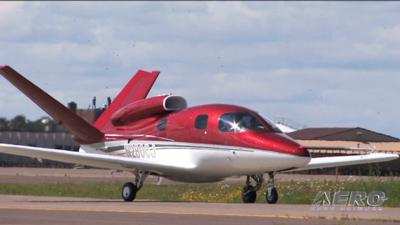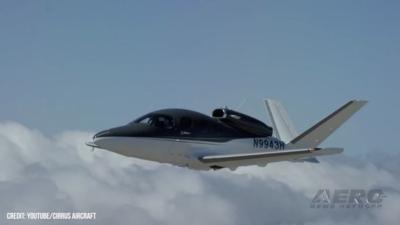The Perils of Inattention
On 08 February a Cirrus SF50 Vision Jet was substantially damaged following a hard landing at Waukesha, Wisconsin’s Waukesha County Airport/Crites Field (UES).

The 2019-vintage SF50 Vision Jet, N426SJ, departed UES on a Part 91 flight under VFR conditions at approximately 10:00 CST. The aircraft was occupied by its pilot and one additional passenger. The 59-year-old pilot held a valid FAA Private Pilot certificate (ASEL), Instrument rating (Airplane), and a current Class III medical certificate with limitations. The pilot had logged 396 total flight hours, 204 PIC hours, and 51 hours in the SF50. In addition to flying 57 hours during the thirty-days preceding the accident, the pilot had successfully completed a flight review on 27 January 2023.
Following a routine preflight inspection of the SF50 and normal start and taxi procedures, the Vision Jet pilot reported hearing a noise during the takeoff-roll—a persistent, grating noise he likened to “gravel hitting the [landing] gear.” Subject noise continued after landing-gear retraction, compelling the pilot to return to UES for a precautionary landing.
While in the UES traffic-pattern on the downwind leg of the approach to runway 28, the SF50’s aural stall-warning alert sounded, preceding by seconds the activation of the aircraft’s stick-shaker. The pilot stated he regained control of the ultra-light jet by deactivating its autopilot via the cockpit control-stick’s autopilot disconnect button.
During touchdown, the SF50 bounced and exited the runway, resulting in substantial damage to the aircraft’s forward fuselage. Following the accident, the pilot discovered he’d had failed to remove the Vision Jet’s Angle Of Attack (AOA) vane cover. The pilot reported experiencing no pre-accident aircraft mechanical malfunctions or failures that would have precluded normal operation.
In its 06 April 2023 Final Report, the National Transportation Safety Board rather predictably determined the probable cause(s) of the 08 February accident to have been the pilot’s failure to maintain aircraft control during landing. Contributing to the accident was the pilot’s inadequate preflight inspection of the SF50, which resulted in his failure to remove the jet’s angle of attack vane cover.

Neither the pilot nor the aircraft’s passenger sustained injury during the accident.
The Cirrus Vision SF50 Vision Jet is a single-engine very light jet first envisioned by CIrrus Founder Alan Klapmeier.
Cirrus unveiled a mock-up of the aircraft on 28 June 2007 and a prototype on 26 June 2008. The SF50 made its maiden flight on 03 July 2008. Development slowed in 2009, however, due to lack of funding. In 2011, Cirrus was acquired by CAIGA, a Chinese enterprise that renewed the SF50 project’s funding while also demonstrating some highly questionable business decisions and tactics that brought it under Federal scrutiny, time and time again.
The first conforming Vision Jet prototype flew on 24 March 2014, followed in rapid succession by the flights of two additional prototypes. The FAA awarded the long-delayed SF50 type certification on 28 October 2016, and deliveries of the aircraft commenced on 19 December. By July 2020, two-hundred SF50s had been delivered. The accident rate among those airframes has been varied and questionable.
The all-carbon fiber, low-wing, seven-seat Vision SF50 is a pressurized, very-light-jet with a cruise-speed of three-hundred-knots and a range of over 1,200-nautical-miles. The aircraft is powered by a single 1,846-pound-foot-thrust Williams FJ33 turbofan engine and features the BRS-derived Cirrus Airframe Parachute System (CAPS)—a whole-plane ballistic parachute recovery system (BPRS).
 Bolen Gives Congress a Rare Thumbs-Up
Bolen Gives Congress a Rare Thumbs-Up The SportPlane Resource Guide RETURNS!!!!
The SportPlane Resource Guide RETURNS!!!! Buying Sprees Continue: Textron eAviation Takes On Amazilia Aerospace
Buying Sprees Continue: Textron eAviation Takes On Amazilia Aerospace Hawker 4000 Bizjets Gain Nav System, Data Link STC
Hawker 4000 Bizjets Gain Nav System, Data Link STC Echodyne Gets BVLOS Waiver for AiRanger Aircraft
Echodyne Gets BVLOS Waiver for AiRanger Aircraft




